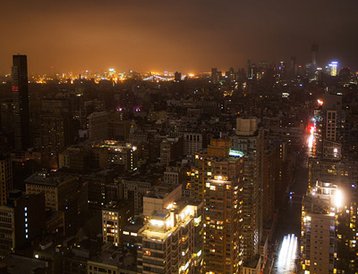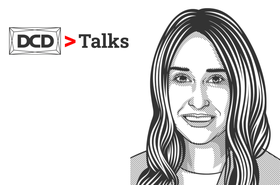On October 29, 2012, after days of wreaking devastation across Cuba, the Caribbean, and the Bahamas, Hurricane Sandy’s storm surged New York, flooding streets, tunnels, and subway lines, and cutting power across the city.
A total of $65 billion (2012 USD, now ~$85.5bn) of damage was done to the major city. Included in the fix-up job was Roxtec’s Stevielyn Burd.
“Being that we're in Manhattan, I'm sure many of us remember the devastation that occurred. And I was lucky enough to be working directly with the Metropolitan Transportation Authority to revamp and harden the New York City Transit critical infrastructure that was devastated by the storm,” Burd told DCD at its DCD>Connect New York event.
“I was directly involved in many of the projects such as the Eastside Access Bank, which is the largest infrastructure project going on right now. That included anything from ceiling traction power, trackside cables, wall and floor penetrations going into substations, sealing everything from signal communications, switchgear applications, and even street-level manhole applications, where the transit utilities and the power utilities were coming together and working towards pumping out those systems and making sure water mitigation would never get back into those systems again.”
As can be imagined, sorting out the repercussions of the storm was a huge job. Manhattan has over 500 stations, 500 miles of passenger tracks, and over half of the substations are completely underground – and were flooded.
But the work done by Roxtec doesn’t only apply to transit. Damaged cables are a huge problem for the digital infrastructure industry as well.
“Many applications in the transit utility space also resonate with data centers and mission-critical facilities, whether that's underground fiber vaults, or exterior wall penetrations where you're carrying cable trays into a system,” explained Burd.
According to Burd, when working in the data center area, a key consideration is making sure that the pathways are able to accommodate high density and a high quantity of cables and conduits, while also providing water, fire, gas, and rodent protection all in one system that's not only reopenable and reconfigurable, but with built-in future spare capacity as well.
“With transit, their systems were installed 50 or 60 years ago. In the data center space, it may not be that long, but things are growing rapidly and you may have installed a number of fiber cables five or 10 years ago, and now you need to include additional 288 fiber counts,” said Burd. “We're focusing on those pathways to be able to accommodate the space that we have to work with, and to develop added space for the future or to remove and service any cables.”
Roxtec is able to go back into the system because it is based on mechanical compression.
“You're able to reconfigure, run your cables through, re-compress the system, and walk away. So there's no additional cost when you're looking to add cables or service any maintenance that may be needed in those systems.”
Of course, designing a cabling system is a case-by-case issue. Roxtec will look at each application specifically, and take into consideration the particular needs, be it weather protection, fire protection, or an issue with water mitigation.
“As soon as we can identify those pain areas, that's exactly what we cover. We take those pain areas into consideration, and we have a full line of solutions. We can provide design drawings and CAD files, BIM files, submittal documents, and whatever may be requested, and we can provide you with all of the testing and certifications as well. So you know exactly what you're getting on your job site.”
Find out more about Roxtec’s cabling systems by watching the full DCD>Talk here:


